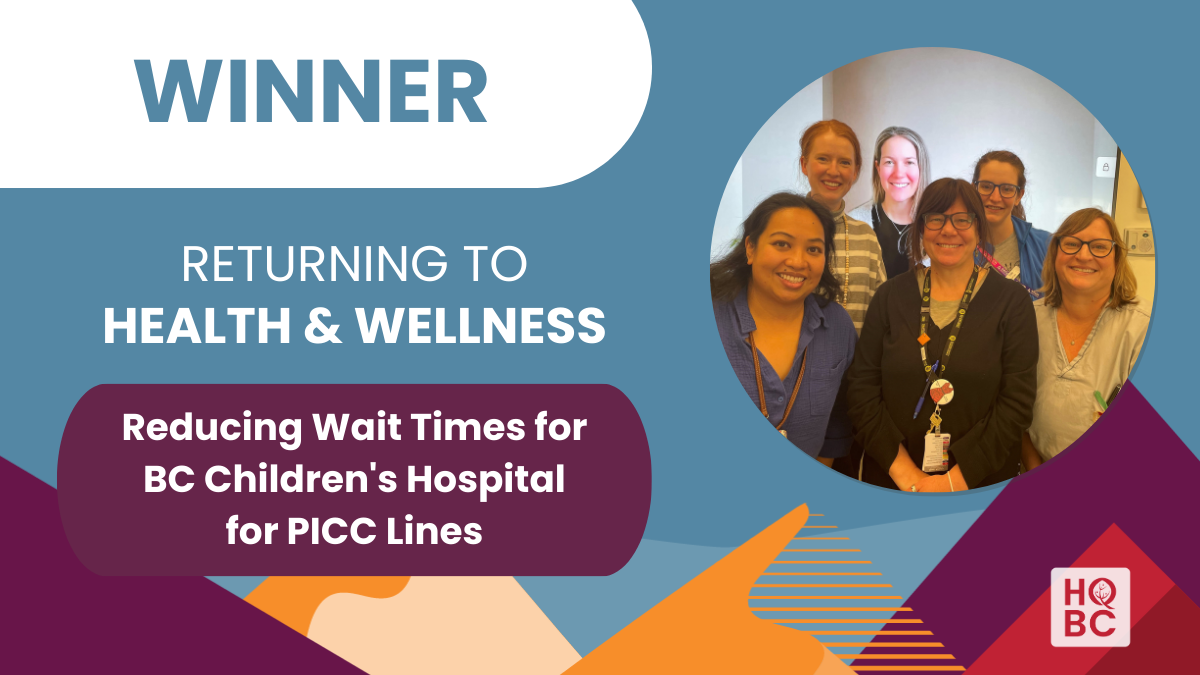- 2024
|
- Winner
|
- Returning to Health & Wellness
Children who are cared for at BC Children’s Hospital (BCCH) are able to receive timely treatment closer to home – and in some cases, at home itself – thanks to the innovative work of BCCH’s POKe and PIVOT team.
The POKe (PICC Opportunities for Kids) and PIVOT (Pediatric IV Outpatient Therapy) team is a combined interdisciplinary team at BCCH, formed to both reduce the waiting time for PICC (peripherally inserted central catheters) insertions for IV therapy and increase access to outpatient services.
“Ultimately, these children can receive the medications, fluids or nutrition they need with less pain and pokes than if they only had peripheral IV access,” says PIVOT and PICC nurse educator Shelby Barr. “This is also in alignment with our organization’s ChildKind Certification, where we’re prioritizing children’s comfort and working to minimize the distress that comes from repeated IV insertions.”
Pediatrician Tom McLaughlin, who is PIVOT’s medical lead, says because of the program, children were able to be at home with their families over the recent holiday – which wasn’t always the case.
“For a child, it’s so much better [to be at home] than being in hospital and we’re just really proud of the opportunity to help support that in our PIVOT program,” says Tom.
Before POKe and PIVOT, there were long wait times for PICCs and limited resources for IV therapy at home or in an outpatient setting, which resulted in lengthy hospital stays for kids.
The POKe and PIVOT team successfully implemented a nurse-inserted PICC and at-home IV program that works with children and families to empower them to receive timely, close-to-home treatment, while simultaneously saving precious tertiary care inpatient resources for those who need it most. They did it by collaborating with many partners across BCCH, as well as the children and families themselves.
By challenging the status quo and bringing an evidence-based approach to addressing this model of care, the team improved care delivery, reduced the number of IV insertion attempts (pokes) a child receives, and has developed a model of care that enables a child to return home sooner than before.
Pauline Voluntad, 17, needed IV antibiotics following foot surgery. The POKe program resulted in fewer needle pokes in hospital, and PIVOT allowed her mother Pamela to administer Pauline’s medication in the comfort of her own home, saving her a month in hospital. It also allowed Pamela to still work regularly and care for the rest of their family.
“She was bruised from having dozens of needles for drawing blood. This way they can take blood and give medication all with this PICC,” says Pamela, adding PIVOT required some learning and practice, but ultimately was the best thing for Pauline and the entire family. “It is intimidating at first, but as you practice, it gets much easier.”


